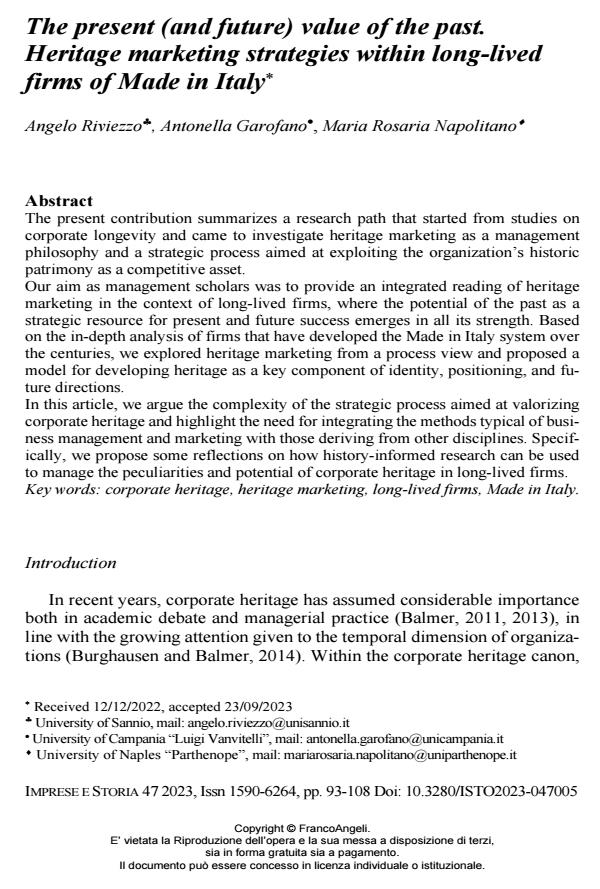The present (and future) value of the past. Heritage marketing strategies within long-lived firms of Made in Italy
Titolo Rivista IMPRESE E STORIA
Autori/Curatori Angelo Riviezzo, Antonella Garofano, Maria Rosaria Napolitano
Anno di pubblicazione 2024 Fascicolo 2023/47
Lingua Inglese Numero pagine 15 P. 95-109 Dimensione file 209 KB
DOI 10.3280/ISTO2023-047005
Il DOI è il codice a barre della proprietà intellettuale: per saperne di più
clicca qui
Qui sotto puoi vedere in anteprima la prima pagina di questo articolo.
Se questo articolo ti interessa, lo puoi acquistare (e scaricare in formato pdf) seguendo le facili indicazioni per acquistare il download credit. Acquista Download Credits per scaricare questo Articolo in formato PDF

FrancoAngeli è membro della Publishers International Linking Association, Inc (PILA)associazione indipendente e non profit per facilitare (attraverso i servizi tecnologici implementati da CrossRef.org) l’accesso degli studiosi ai contenuti digitali nelle pubblicazioni professionali e scientifiche
The present contribution summarizes a research path that started from studies on corporate longevity and came to investigate heritage marketing as a management philosophy and a strategic process aimed at exploiting the organization’s historic patrimony as a competitive asset. Our aim as management scholars was to provide an integrated reading of heritage marketing in the context of long-lived firms, where the potential of the past as a strategic resource for present and future success emerges in all its strength. Based on the in-depth analysis of firms that have developed the Made in Italy system over the centuries, we explored heritage marketing from a process view and proposed a model for developing heritage as a key component of identity, positioning, and fu- ture directions. In this article, we argue the complexity of the strategic process aimed at valorizing corporate heritage and highlight the need for integrating the methods typical of busi- ness management and marketing with those deriving from other disciplines. Specif- ically, we propose some reflections on how history-informed research can be used to manage the peculiarities and potential of corporate heritage in long-lived firms
Parole chiave:corporate heritage, heritage marketing, long-lived firms, Made in Italy.
Angelo Riviezzo, Antonella Garofano, Maria Rosaria Napolitano, The present (and future) value of the past. Heritage marketing strategies within long-lived firms of Made in Italy in "IMPRESE E STORIA" 47/2023, pp 95-109, DOI: 10.3280/ISTO2023-047005